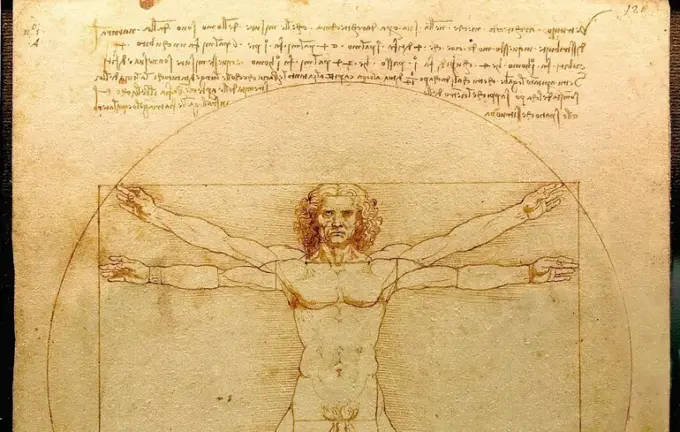Science Unveils the Genius of da Vinci: New Insights into Vitruvian Man

Five centuries after the creation of Leonardo da Vinci’s legendary drawing—the Vitruvian Man—scientists have uncovered new details shedding light on its mysterious proportional system.
Researchers suggest that the Renaissance artist may have employed intricate geometry based on an equilateral triangle, which played a crucial role in shaping his ideal human form.
This discovery, which remained a mystery for over 50 years, is now gaining new support through the analysis of the drawing’s proportions by London dentist Rory McSwine.
His calculations indicate that the model’s finger, hand, and leg coordinate with a hidden equilateral triangle at the center of the image, aligning with the theory that da Vinci was guided by harmonious geometric principles, including the tetrahedral ratio of approximately 1.633.
This number, deeply rooted in scientific and artistic history, is used in various fields such as dentistry, architecture, and anatomy, emphasizing the universal nature of geometric laws.
The research also refers to Vitruvius’s ideas about balancing circles and squares, reflected in the depiction of the human figure in different spatial positions within these geometric shapes.
These findings intertwine history, mathematics, and biology, suggesting that human anatomy might have evolved according to natural geometrical laws that govern the structure of the universe.
While these theories await further confirmation, they open new avenues for understanding the creative and scientific genius of Leonardo da Vinci.

